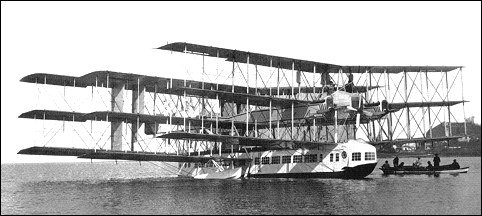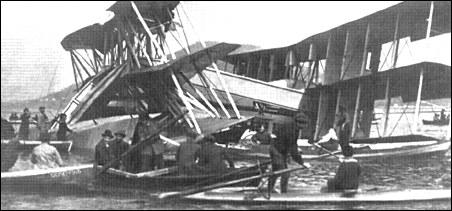 |
Caproni Ca.60 Noviplano1921 |  |
| PASSENGER | Virtual Aircraft Museum / Italy / Caproni |
 |
Count Gianni Caproni, builder of some fine aircraft, chose for some reason to build a giant flying boat with no fewer than nine wings and eight engines. With this, or an even bigger version, he hoped to fly over 100 passengers across the Atlantic. Amidst all the struts and wings, the absence of any tail surfaces could easily be overlooked. Reportedly making a short hop without incident, the official first flight was less successful. Rising to about 18m above Lake Maggiore, the Ca.60 suddenly nosed down and dived into the water. Some said that testing had shown the need for a lot of lead ballast and that this had shifted in flight. Test pilot Semprini crawled out of the wreck unscathed. Later a mysterious fire destroyed the remains and ended the Count's transatlantic dream. FACTS AND FIGURES © The Ca.60 had twice the wing area of a B-52 bomber. The equal size wings would have nearly equal loading, making it longitudinally unstable. Supposedly differential use of front and rear ailerons would have controlled pitch. © The eight Liberty engines were arranged with three pulling and pushing on the front wing and three pushing and one pulling at the back. The centre engines had four-bladed propellers. © The pilot had an open cockpit, but the passengers in the cabin had more windows glazing than any airliner before or since. Caproni Ca.60 Noviplano on YOUTUBE
|  COMPANY PROFILE | |||||||||||||||||||||||||||||||||||||||
 |

|

